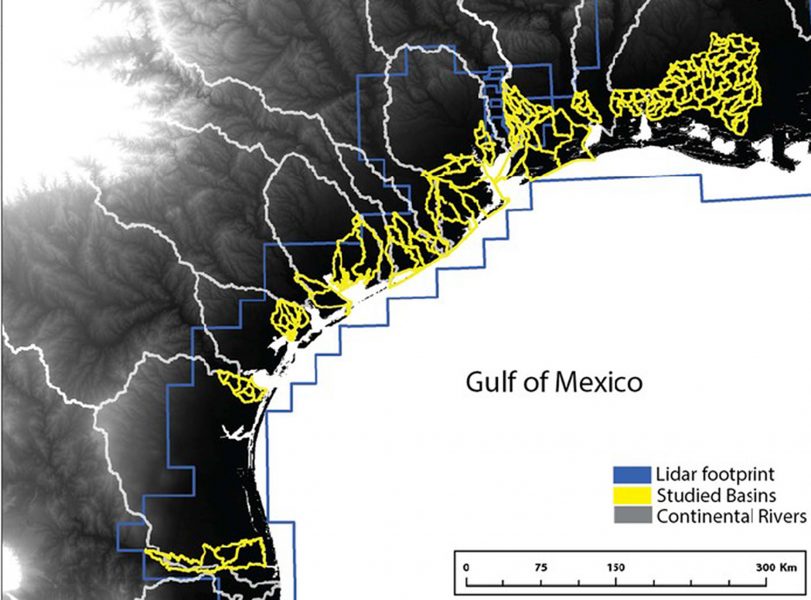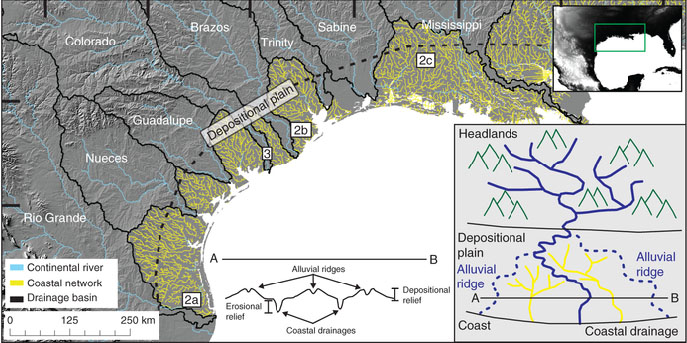Overlooked Channels Influence Flow and Flooding Along Gulf Coast
December 5, 2022

An unnoticed network of channels is cutting across the coastal plain landscape along the Gulf Coast and influencing how water flows, according to research from the Jackson School of Geosciences and The Water Institute of the Gulf that could help predict flooding from major storms in the future.
The coastal plains are relatively flat, which has kept most research on flood risk and water flow focused on large rivers in the region. But the new research revealed that although the surface elevation is steady, the landscape is covered in deep, narrow channels that play an important role in moving water.
“We see through things like Hurricane Harvey that what is happening to the broader landscape when there is a lot of water present is really important,” said the study’s lead author, John Swartz, who started the research as a doctoral student at the Jackson School and is now a research scientist at The Water Institute of the Gulf.
The research was published in Nature Geoscience in February 2022.
Scientists said that understanding the specifics of how the channels move water — especially during floods — in different areas will require more research, and ultimately the findings will need to be incorporated in national and regional flood models.
Channels on their own are not an uncommon sight along the coastal plain. However, researchers were able to show the full extent of the branching networks they form by creating a highresolution elevation map spanning the Gulf Coast from Texas to Mississippi.
The data for the map came from state and federal agencies — including the Texas General Land Office Natural Resources Information Service, the U.S. Geological Survey and the Federal Emergency Management Agency — which collected the information over the years for local and regional use.
As it became public, Swartz and his collaborators pieced it together to get the most comprehensive and detailed look yet at coastal plain topography.

The map captured every 3 meters of the coastal plain and measured elevation changes within a few centimeters. At this scale, a complex array of channel networks emerged. The channel networks cover more than 12,000 square miles, or about one-third of the study region, and separate into more than 40 distinct drainage basins. The depth of these basins can be as large as 22-32 feet, which is comparable to the depths of the larger rivers in the area.
“How the topography is distributed has significant consequences for how extreme precipitation is routed across the landscape,” said co-author David Mohrig, a professor in the Jackson School’s Department of Geological Sciences.
The study has already led to important geological insights about how these channel networks form and evolve.
For example, in most geological settings drainage basins form when a landscape is hollowed out over millions of years of erosion. But in the case of the coastal plain networks, the basins are built up at their edges by accumulated sediment, which was deposited on the landscape by the region’s rivers when they followed different paths hundreds to thousands of years ago. As the rivers’ paths change in the future, the sediments they leave behind will probably define the edges to new drainage basins.
Mohrig said that this study exemplifies a growing research stream at the Jackson School called “environmental sedimentology,” which focuses on how the dispersal and buildup of sediments over time affects human communities and larger ecosystems.
Back to the Newsletter